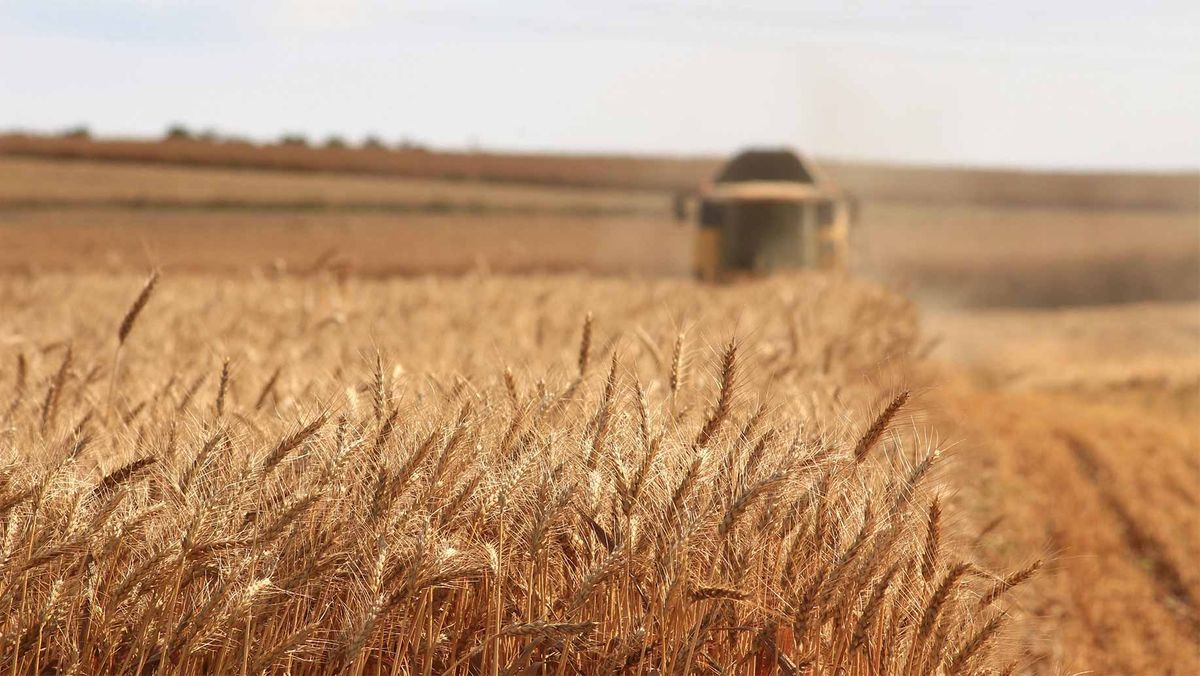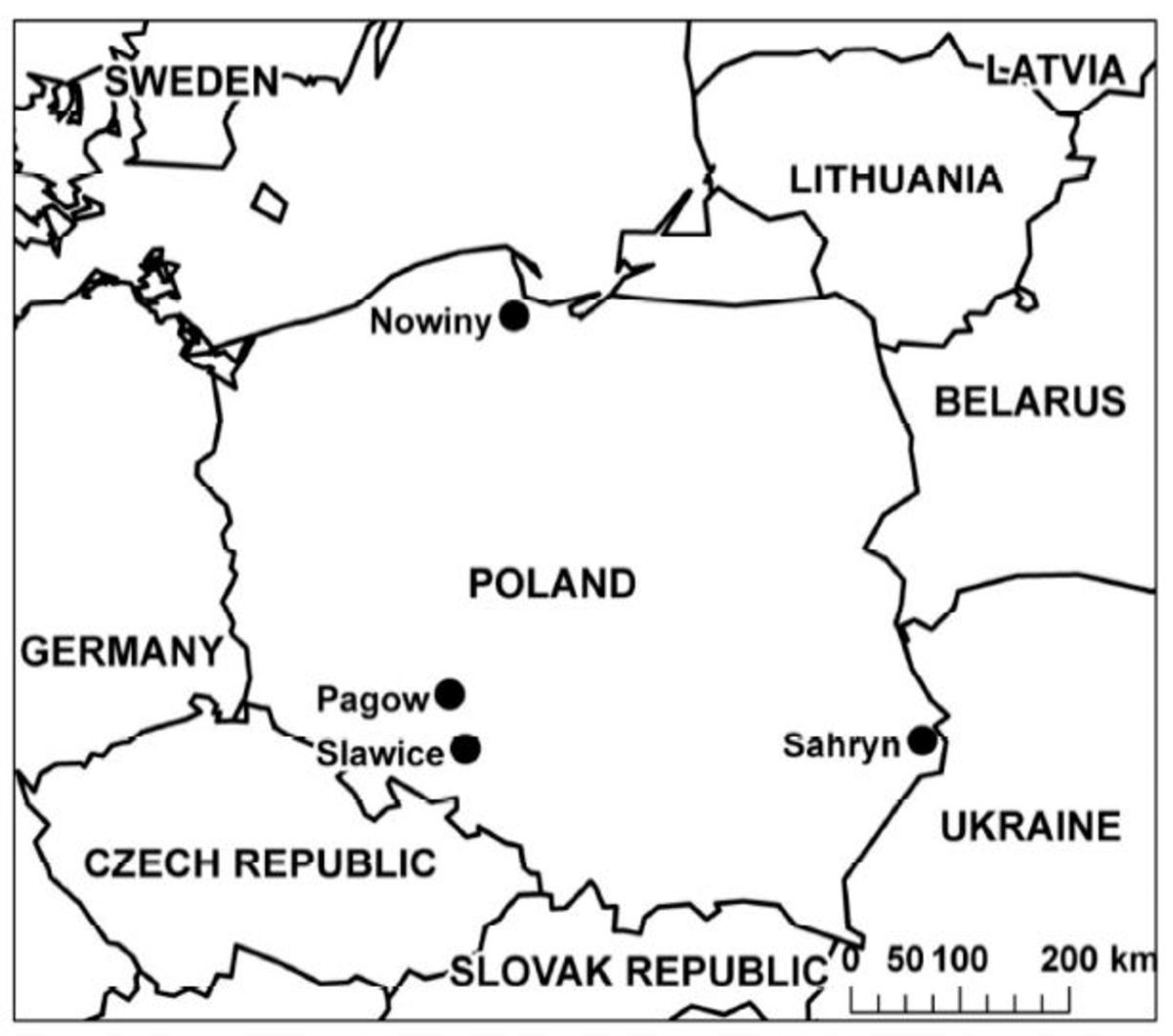Product(s)
penergetic b
penergetic k
penergetic p
Partner
Institute of Agriculture, Warsaw University of Life Sciences—SGGW
Arkadiusz Artyszak und Dariusz Gozdowski
Customer
Institute of Agriculture, Warsaw University of Life Sciences—SGGW
13% higher grain yield in winter wheat despite reduced quantity of mineral nitrogen
"It was confirmed that these two combinations allowed the obtention of a higher yield of grain by 13%, compared to the full nitrogen dose. Simultaneously, the grain quality did not change significantly."
Arkadiusz Artyszak und Dariusz Gozdowski - Institute of Agriculture, Warsaw University of Life Sciences—SGGW


Figure 1: Locations of the field experiments
Trial and Methods
Locations
In years 2016/17–2018/2019, nine field experiments with winter wheat were conducted: four in season 2016/2017 (Sahryn´ , Pa˛gów, Nowiny and Sławice); four in 2017/2018 (Sahryn´ , Pa˛gów (two) and Nowiny); one in 2018/2019 (Sahryn´ ) (Figure 1).
Method
Soil samples were collected at two soil depths (0–30 cm and 30–60 cm) two times: immediately after harvesting the forecrop and after harvesting winter rapeseed. In each sampling, three subsamples per each plot were collected, i.e., one mixed composite sample per each treatment consisted of 12 subsamples (3 subsamples _ 4 plots).
In the study, the course of weather conditions was limited to the spring and summer growing season (March–July). The amount of rainfall in this period in the year 2017 was 259–406 mm, in 2018 197–419 mm and in 2019—265 mm (Figure 2 in the original report to download below).
Treatments
Treatment 0 = control
- Full dose of mineral nitrogen fertilizer (depending on location 111-238 kg N/ha).
Treatment 1 = 30% reduced amount of N + penergetic k and penergetic p
- Dose of mineral nitrogen reduced by 30% (first application of nitrogen in spring analogous to control, reduced amount in applications II and III; depending on location 97 - 167 kg N/ha)
- penergetic k 400 g/ha after harvesting the previous crop
- penergetic k 400 g/ha with the first pesticide application in spring penergetic p 300 g/ha with the second pesticide application in spring
- penergetic p 300 g/ha three weeks after the first application
- penergetic p
Treatment 2 = 30% reduced amount of N + penergetic k and penergetic p + azoter
- 30% reduced dose of mineral nitrogen (first application of nitrogen in spring analogous to control, reduced amount in applications II and III; depending on location 97 - 167 kg N/ha)
- penergetic k 400 g/ha + Azoter 10dm3/ha after harvesting the previous crop
- penergetic k 400 g/ha + Azoter 10dm3/ha with the first pesticide application in spring
- penergetic p 300 g/ha with the second pesticide application in spring
- penergetic p 300 g/ha three weeks after the first application penergetic p
The irrigation rate was the same for all treatments.

Effect of the application of the reduced dose of mineral nitrogen, penergetic + Azoter on the grain yield of winter wheat—summary.

Grain yield by treatment 2017 - 2019.
More details in the original report available for download below
Results
Treatment number 1 caused a significant increase in the grain yield (by 13.2%), 1000 grain weight (by 6.1%), grain uniformity (by 1.8%), falling number (by 3.9%), plant height (by 3.8%) and the number of grains in ears (by 8.9%), and a significant reduction in the density of non-productive shoots (by 23.0%) and the value of Zeleny’s sedimentation value (by 1.8%) compared to treatment number 0 (control).
Treatment number 2 caused a significant increase in grain yield (by 13.7%), straw yield (by 14.4%), 1000 grain weight (by 5.4%), grain uniformity (by 3.0%), falling number (by 4.4%), plant height (by 7.1%) and the number of grains per spike (by 8.6%), as well as a significant reduction in the number of non-productive shoots (by 16.9%), the protein content in the grain (by 1.4%) and the content of gluten (by 1.4%) compared to treatment number 0 (control).